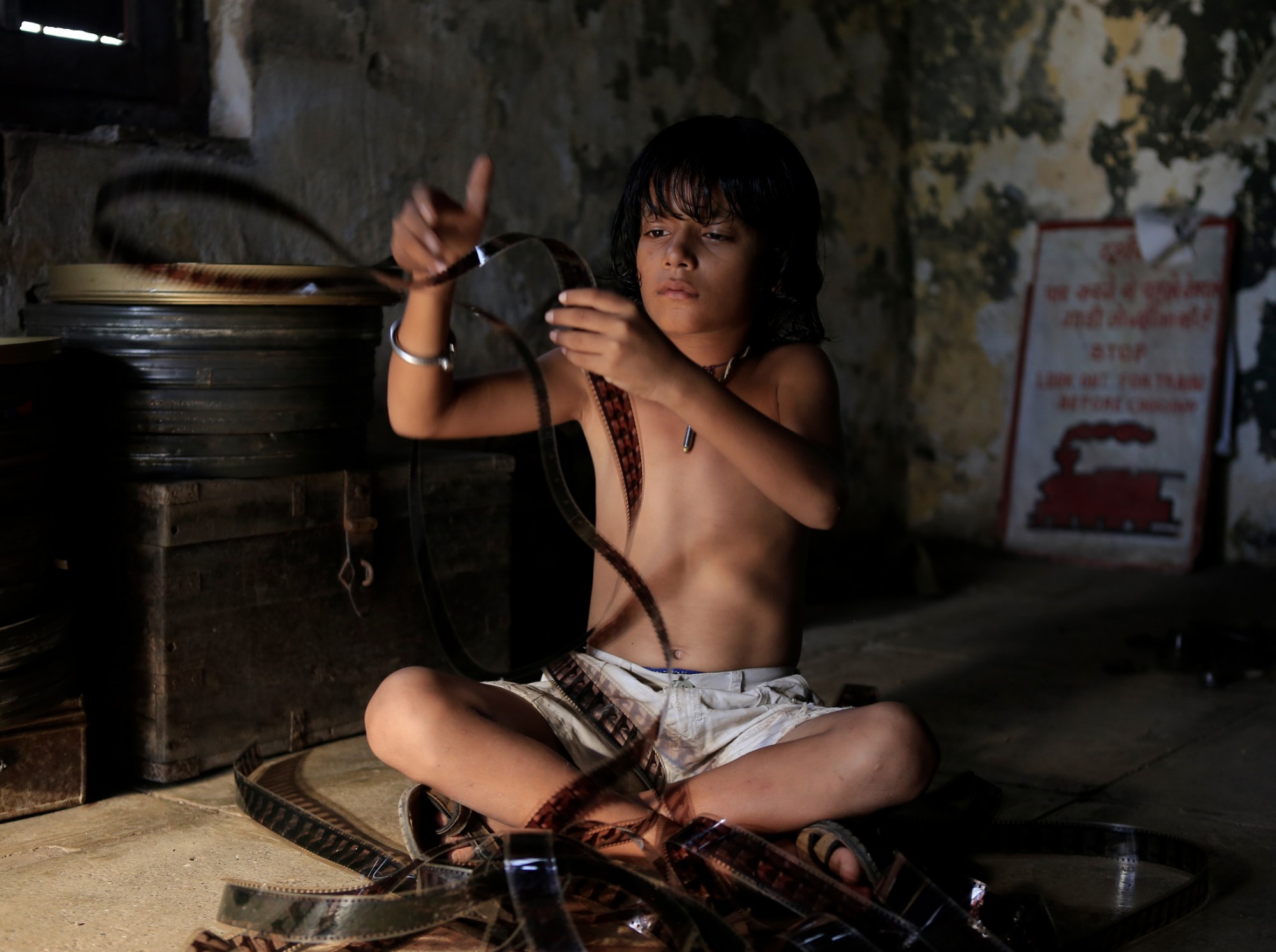
- Golden Globe Awards
Last Film Show (India)
Films, food, friendship, family, and future: Last Film Show has it all. Nothing gives us as many emotional highs and lows when one is mesmerized by cinema. Set in 2010 in the remote Indian countryside, Last Film Show is the partly autobiographical story of writer-director, Pan Nalin. It tells the story of free-spirited nine-year-old Samay whose life turns upside down after watching a movie at the local Galaxy Cinema. Falling passionately in love with films, he begins to steal money from his father’s struggling teashop and skip school to watch movies. Soon, Samay develops a new obsession: light and cinema.
Nalin (Samsara, Valley of Flowers, Angry Indian Goddesses) explores his own childhood memories, and the picture has been filmed in the countryside he grew up in. “It’s been quite challenging revisiting my own childhood. We grew up poor, but it never felt like that. I really thought we had everything we need. It was only once I moved to the city that I realized the lack of resources. So, I had to make something authentic and innocent, a story about a couple of kids, living with nothing, but nothing stops them.”
In an interview at the Spice restaurant in Beverly Hills, Nalin says, “It’s been quite challenging revisiting my own childhood. We grew up poor, but it never felt like that. I really thought we had everything we need. It was only once I moved to the city that I realized the lack of resources. So, I had to make something authentic and innocent, a story about a couple of kids, living with nothing, but nothing stops them.
In the movie, Samay’s father quickly discovers his son’s “immoral” obsession and physically punishes him to get him to stay away from the “filthy” world of movies. It is already too late for Samay.
“My father could never accept my desire to “become” films. He wanted me to have a more stable and respectable job working in the railways, or becoming an accountant, but I just could not shake my vision and knack for telling stories. Even now, when I visit my family, they remind me of the crazy lengths I would go to watch movies, from stealing 35mm film reels to collecting discarded matchboxes, only to line up the pictorial logos on them to aid my storytelling sessions,” says Nalin.
Later in the story, Samay’s path crosses with Fazal, the projectionist at the Galaxy Cinema, and together they strike a deal. Samay will let him eat the delicious food that his mother lovingly makes for him every day, and in return, Fazal will let him watch movies all day long from the projection room. Their “food-for-films” deal turns into an endearing, long-lasting friendship. But an era of change is sweeping through the country, and soon the unlikely duo will be forced to make heartbreaking choices, and ultimately their dreams will be altered forever.
India produces over 2000 films a year. Before 2010, some of these titles would strike up to 2500 prints. So one could only imagine the magnitude of 35mm film prints and projectors that were destroyed at the onset of the digital era. “Last Film Show for me is a cinematic mission. The disappearance of all things ‘film’ had shattered all my celluloid dreams. When the world took away the film from me, it was almost like taking away the red, blue, or yellow color from an artist who paints. But still, I did not want to make a nostalgic lament of the past. I wanted to highlight the adaptive nature of humans and celebrate our ability to embrace change while fulfilling a lifelong dream to pay an ode to my most admired films and filmmakers” concludes Nalin.